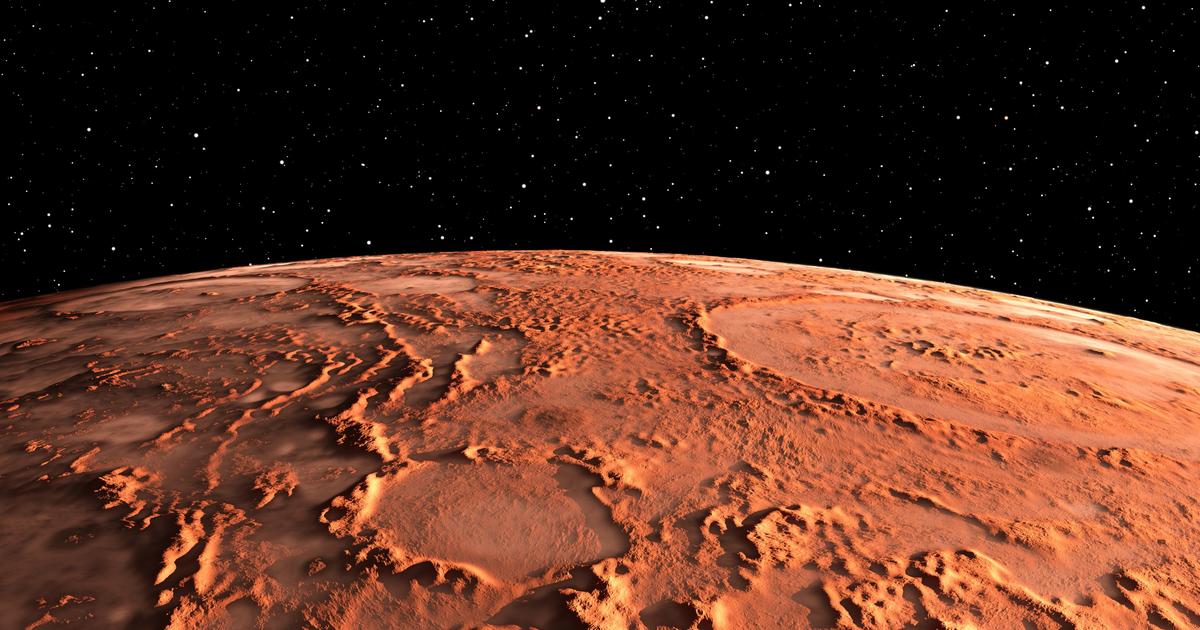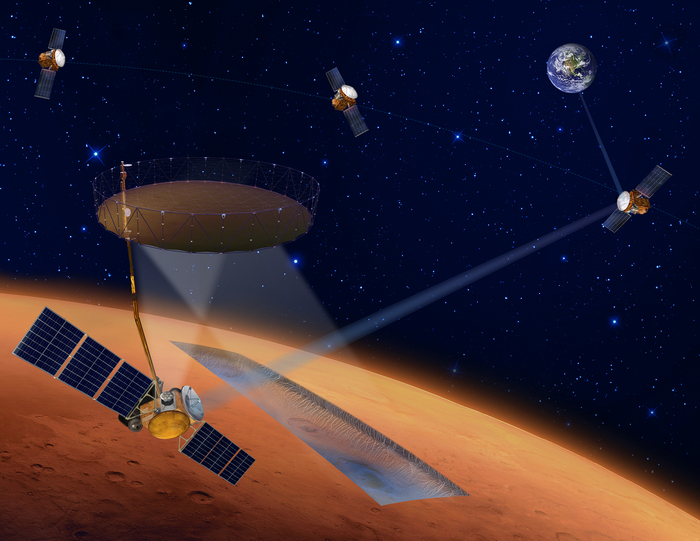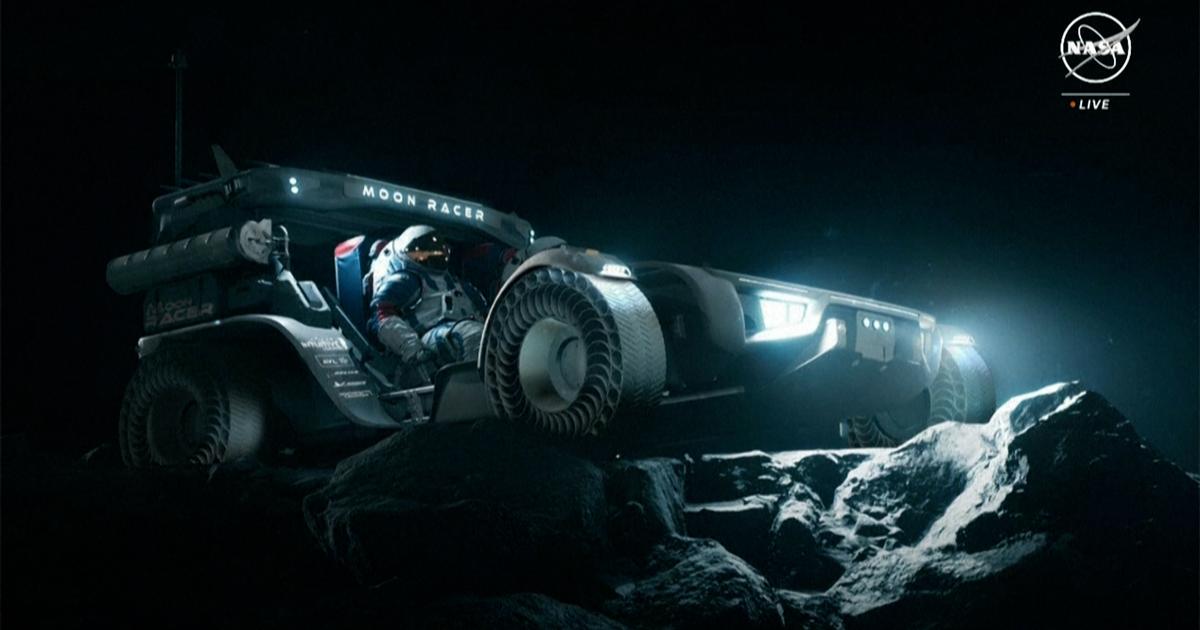The NASA fleet on Mars will soon be inaccessible for some time: Due to an astronomical phenomenon, contact will shortly no longer be possible.
Update from Wednesday, October 6th, 2021:
The US space agency Nasa has had no contact with its Mars fleet for a few days. Contact with all research equipment on Mars and all orbiters in the orbit of the red planet has been interrupted because Mars is now behind the sun from an earthly perspective. Communication that goes directly past the sun could be disturbed, so that NASA has completely broken off contact to be on the safe side.
As soon as Mars emerges from behind the sun, NASA will restore contact and first download all data from the rovers and orbiters.
The space probes and rovers continue to work during this time, only critical functions such as moving "body parts" of the rovers have been completely discontinued.
For the entire time, NASA has sent instructions to the rovers and orbiters as to what they should do now.
No contact with the Mars fleet: Nasa plays it safe
Update from Wednesday, September 29th, 2021:
The time when the US space agency Nasa breaks off contact with its fleet of rovers on Mars and orbiters in Mars orbit is getting closer.
From October 2nd, there will be no radio communication because the sun is between Earth and Mars (“solar conjunction”) and disrupts radio communications.
The rovers and orbiters will still work, but will not send any data to Earth and will not receive any commands from NASA.
They were sent to Mars in advance for this purpose.
+
mars-nasa-rover-curiosity-funkstille-erde.jpg
© Nasa / JPL
"Even if our Mars missions will not be as active in the next few weeks, they will still let us know their health status," emphasizes NASA manager Roy Gladden.
"Every mission has been given homework that they should work through until they hear from us again."
Radio silence between Earth and Mars: Why NASA is interrupting contact with rovers and orbiters
The following plans apply to NASA's Mars fleet:
Rover “Perseverance”:
sensors will record weather data, the camera will be on the lookout for dust devils (without moving the “mast camera”), a radar will be active, and the microphones will also record noises.
Mars helicopter “Ingenuity”: T
he small helicopter is currently about 175 meters from its mother rover “Perseverance” and should stay there for the time being.
Its only job: the helicopter should communicate its status to the rover on a weekly basis.
Rover “Curiosity”:
Sensors should record weather data, the “RAD” instrument should take radiation measurements and the cameras should keep an eye out for dust devils.
Lander "Insight":
Will try to record marsquakes with its seismometer.
Orbiters "Odyssey", "MRO" and "MAVEN":
should send data from the surface of Mars to Earth - if possible.
In addition, they should continue to carry out their own missions.
From October 16, the radio silence will end due to the solar conjunction, then the data collected during this time will be sent from Mars to Earth, where NASA's Deep Space Network (DSN) will receive it.
It should take about a week before the data is sent to Earth and normal operations on Mars can continue.
"Solar conjunction": NASA temporarily breaks off contact with Mars fleet
First report from Tuesday, September 14th, 2021:
Frankfurt - Mars * is probably the best-researched planet beyond the earth, it is one of the most important goals of large space missions *. For more than 20 years, the US space agency Nasa * has stationed research missions there, the aim of which is to better understand the red planet and find out whether it was once able to harbor life - or whether there is still life there today gives.
Space research * on Mars is often difficult: In addition to the difficult conditions on the planet's surface (extreme temperatures, radiation that is fatal to humans), there is a delay in communication that is between three to 20 minutes for the one-way route between Mars and Earth and ensures that all vehicles on the Mars surface and orbiters in Mars orbit have to act autonomously on a daily basis.
Radio silence between NASA and Mars: red planet disappears behind the sun
But about every 26 months an astronomical phenomenon interrupts communication between the earth and the busy research equipment on and around Mars.
The red planet is then in conjunction with the sun - this means that Mars is “behind” the sun when viewed from the earth and is not visible for about two weeks.
You could still send commands to the Mars rovers and orbiters, but it can happen that data is lost or partially destroyed by the sun.
In order to prevent the Mars fleet from being endangered by incorrect commands, NASA therefore stops all communication with Mars for two weeks.
The active Mars fleet |
|
|---|---|
NASA orbiter 2001 Mars Odyssey |
since October 2001 |
Esa-Orbiter Mars Express |
since December 2003 |
NASA orbiter Mars Reconnaissance Orbiter |
since March 2006 |
Nasa Rover Curiosity |
since August 2012 |
Indian Orbiter Mars Orbiter Mission (Mangalyaan) |
since September 2014 |
NASA orbiter MAVEN \ t |
since September 2014 |
Euro-Russian orbiter ExoMars Trace Gas Orbiter |
since October 2016 |
NASA Lander Insight |
since November 2018 |
NASA Rover Perseverance |
since February 2021 |
NASA helicopter Ingenuity |
since February 2021 |
Emirati orbiter Emirates Mars Mission (Hope) |
since February 2021 |
Chinese orbiter Tianwen-1 |
since February 2021 |
chinese rover zhurong |
since May 2021 |
In 2021, this radio silence between Mars and Earth will apply to NASA for the period from October 2 to October 14.
Before that, however, there was again hectic activity: Data was downloaded again and the rovers and orbiters were prepared for the two-week break in communication with the ground stations.
Some instruments will be switched off for this time, the rovers “Perseverance” and “Curiosity” will be parked and the helicopter “Ingenuity” will probably have to remain on the ground.
NASA employees have to wait two weeks for signals from Mars
But NASA's Mars fleet is not completely off work during these two weeks: NASA employees also send commands for the time of the “blackout” to Mars, which the rovers and orbiters are supposed to process during this time.
Then the following applies: Wait two weeks until communication is possible again.
That sounds risky, but "engineers are now used to leaving their space probes on their own," says NASA.
In fact, many members of NASA's Mars team use the quiet time even for a few days of vacation, the space agency continues.
All important news from astronomy and space travel straight to your mailbox
*
If Mars reappears after about two weeks, the Mars fleet sends cached research data to Earth.
Large data - such as photos or videos - are usually not recorded during the communication break, as they can hardly be temporarily stored.
Incidentally, the communication break between Earth and Mars does not only apply to the US space organization Nasa.
The European space agency Esa, India, China and the United Arab Emirates are also affected with several orbiters and a rover.
(tab)
* fr.de is an offer from IPPEN.MEDIA.





